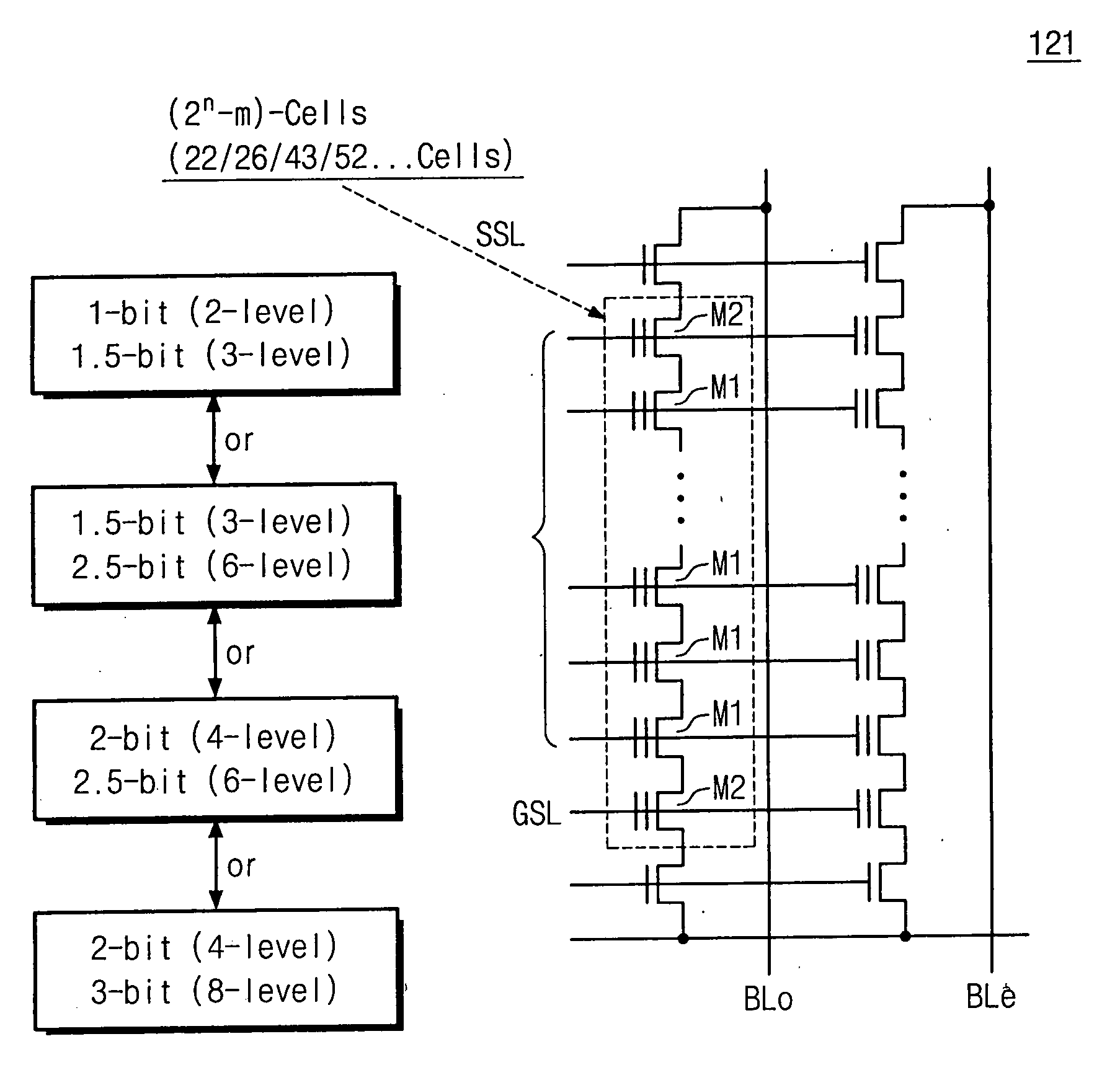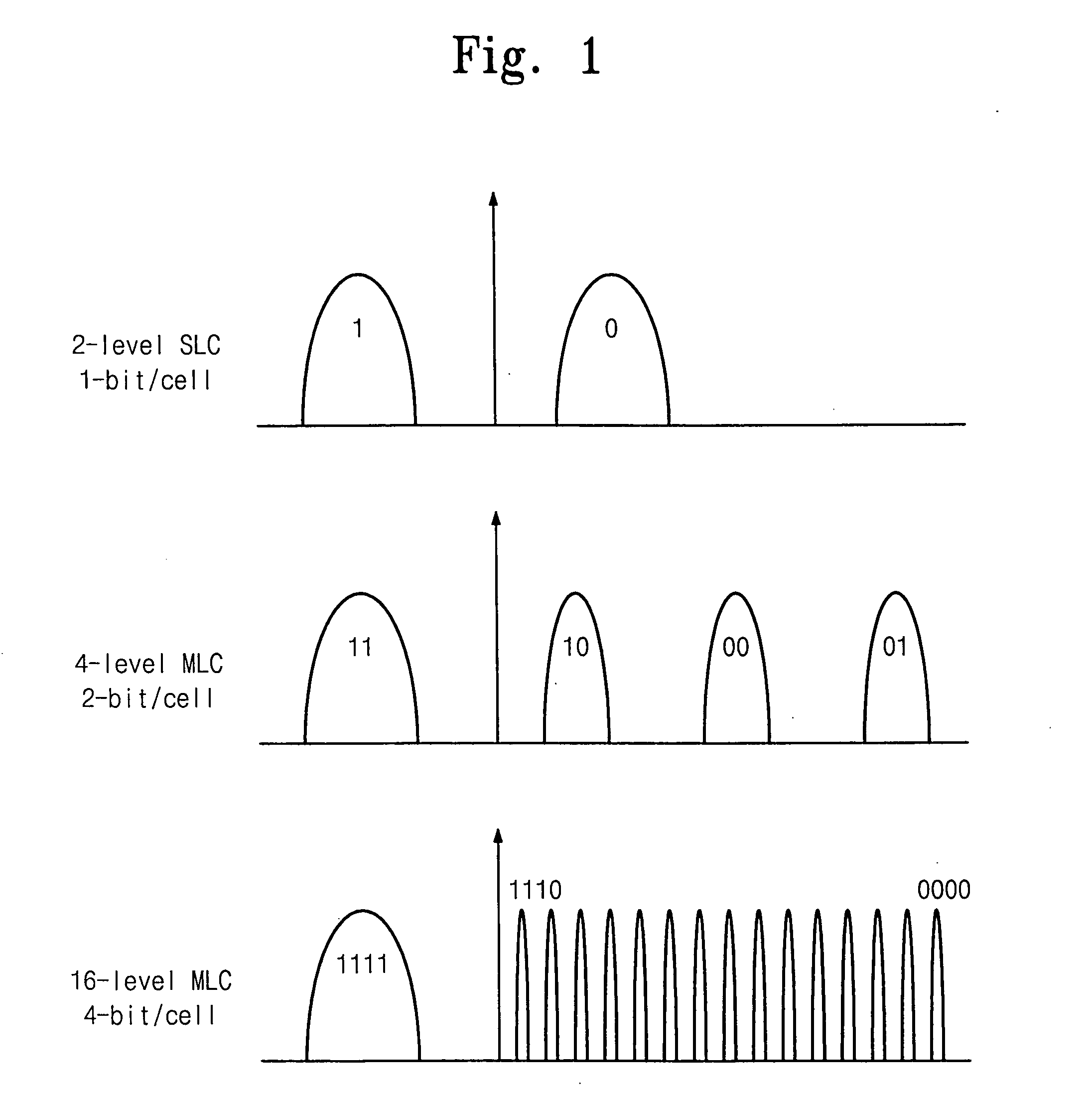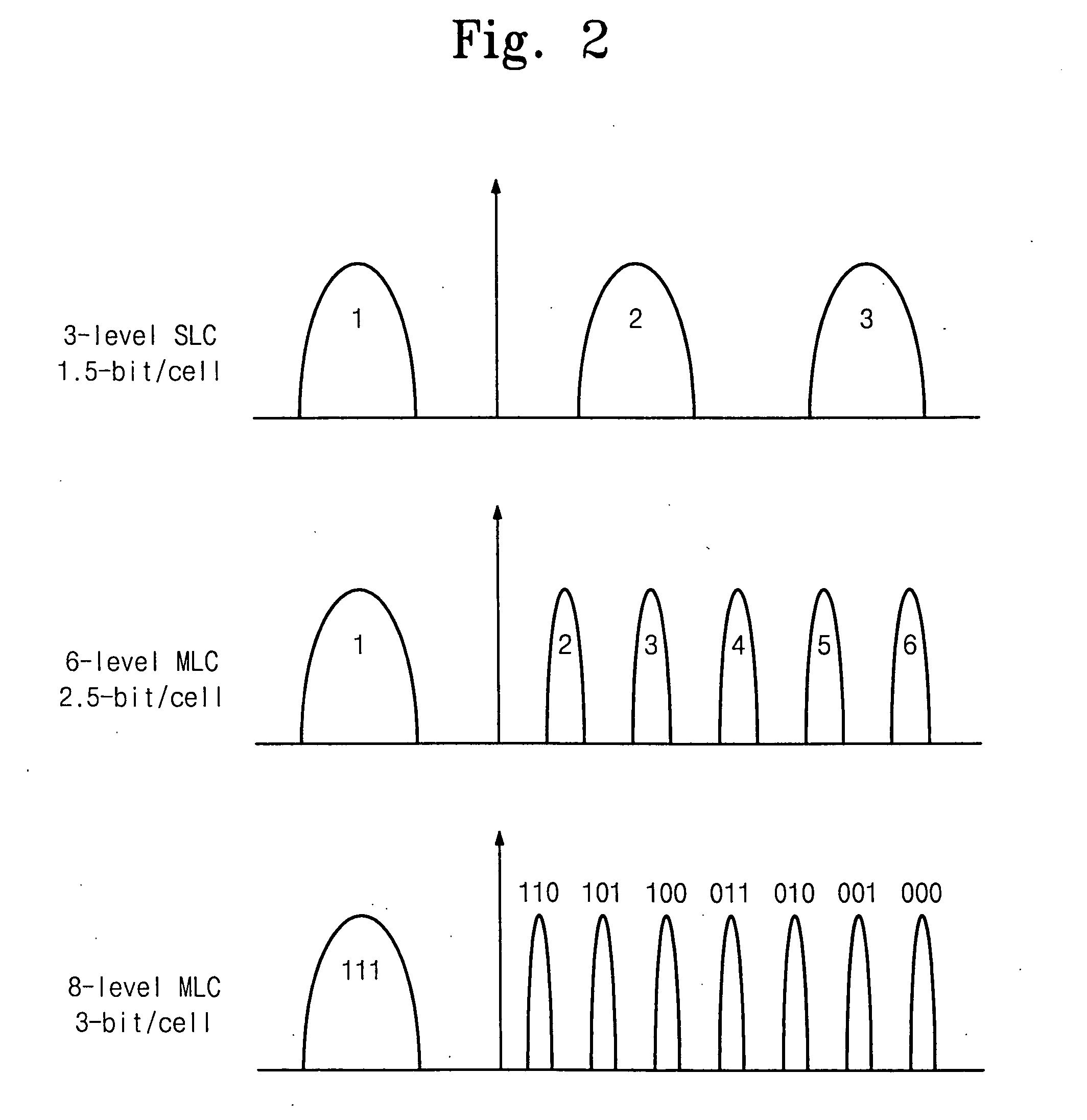Multi-bit flash memory device including memory cells storing different numbers of bits
a flash memory and memory cell technology, applied in static storage, digital storage, instruments, etc., can solve the problems of affecting the operation of flash memory cells designed to store more bits, and affecting the operation of flash memory cells. , to achieve the effect of increasing the risk of programming and sensing errors, and reducing the number of bits
- Summary
- Abstract
- Description
- Claims
- Application Information
AI Technical Summary
Benefits of technology
Problems solved by technology
Method used
Image
Examples
Embodiment Construction
[0035]Exemplary embodiments of the invention are described below with reference to the corresponding drawings. These embodiments are presented as teaching examples. The actual scope of the invention is defined by the claims that follow.
[0036]Data retention characteristics of memory cells included in flash memory devices according to selected embodiments of the invention can be established in various patterns according to user requirements. As an example, the data retention characteristics may be established by setting a state(s) of fuse(s) or by storing data in one or more registers. A control logic unit may then operate to control functions carried out by latches in page buffers of a page buffer circuit according to the data retention characteristics indicated by the state(s) of the fuse(s) or register(s). Thus, the device is able to conduct programming, reading, and erasing operations in selected memory cells without changing structures of the page buffers, even when the number of...
PUM
 Login to View More
Login to View More Abstract
Description
Claims
Application Information
 Login to View More
Login to View More - R&D
- Intellectual Property
- Life Sciences
- Materials
- Tech Scout
- Unparalleled Data Quality
- Higher Quality Content
- 60% Fewer Hallucinations
Browse by: Latest US Patents, China's latest patents, Technical Efficacy Thesaurus, Application Domain, Technology Topic, Popular Technical Reports.
© 2025 PatSnap. All rights reserved.Legal|Privacy policy|Modern Slavery Act Transparency Statement|Sitemap|About US| Contact US: help@patsnap.com



